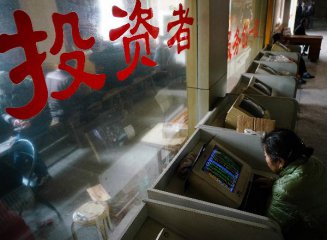
The past week was a torture to emerging markets. On the last trading day of last week, the Argentine peso fell more than 4 percent against the US dollar, and fell more than 19 percent for the whole week.
Similarly, many other emerging market currencies are also at depression. In the face of this deja vu, a number of emerging market monetary authorities have chosen to take action to defend their currencies. Some institutions believe that the turmoil in the foreign exchange market in emerging countries highlights the heavy dependence of the international community on the US dollar, and policy makers need some patience.
The Argentine peso has been struggling in the past week. As of the close on August 29, the peso depreciated 7 percent against the US dollar. To support peso, the Argentine central bank announced on August 30 Beijing time that it would raise the benchmark interest rate from 45 percent to 60 percent. However, the peso eventually closed with a downtrend last week.
Affected by the depreciation of peso, emerging market currencies were under pressure last Thursday. The Turkish lira fell 3.87 percent against the US dollar, close to the low reached earlier this month. The South African Rand fell 2.46 percent. The Brazilian Real was close at more than two years low. The Indian Rupee hit a record low. Among them, the Turkish lira, the South African Rand and the Indian Rupee have been sold off.
To maintain the stability of the foreign exchange market, central banks in emerging economies are moving to support the market. Indian central bank officials said on August 29 that the central bank will defend the rupee and avoid a sharp depreciation. On the same day, the Turkish central bank announced that since August 29, the bank's loan limit for overnight trading has doubled from the upper limit applicable before August 13. The Brazilian central bank carried out a $1.5 billion swap auction on August 30, to provide liquidity to the country's foreign exchange market and promote smooth operation of the foreign exchange market.
As the Fed’s rate hike policy pushes the US dollar stronger, the dollar continued to strengthen against other currencies. The dollar-denominated debt is more expensive, and the global developing economies are being squeezed.
Esval Prasad, a professor of economics at Cornell University, said that "considering the dominance of US financial markets and institutions and the importance of the US dollar in the global financial market, any action taken by the Fed will inevitably lead to global repercussions.”
Turbulence in foreign exchange markets of emerging countries implied that other countries are heavily dependent on the US dollar. Statistics showed that the US dollar-denominated loans accounted as high as 48 percent of the 30 trillion US dollars of cross-border loans across the whole world, higher than the proportion of 40 percent ten years ago.
Nevertheless, some institutions still believed that there are still opportunities in emerging markets. According to statistics from research institution Capital Economics, GDP growth in emerging countries recorded about 4.6 percent in the second quarter, higher than the 4.5 percent in the first quarter. The robust economic growth in Asia set off the impact from slowing economic growth in Latin America.
Rob Arnott, founder and president of asset manager Research Affiliates, remarked that emerging countries need patience. Justin Sibears, ETF strategist at Newfound Research, agreed with this and said that we are rosy about the emerging market in next five to ten years.
Translated by Coral Zhong & Vanessa Chan





















Latest comments